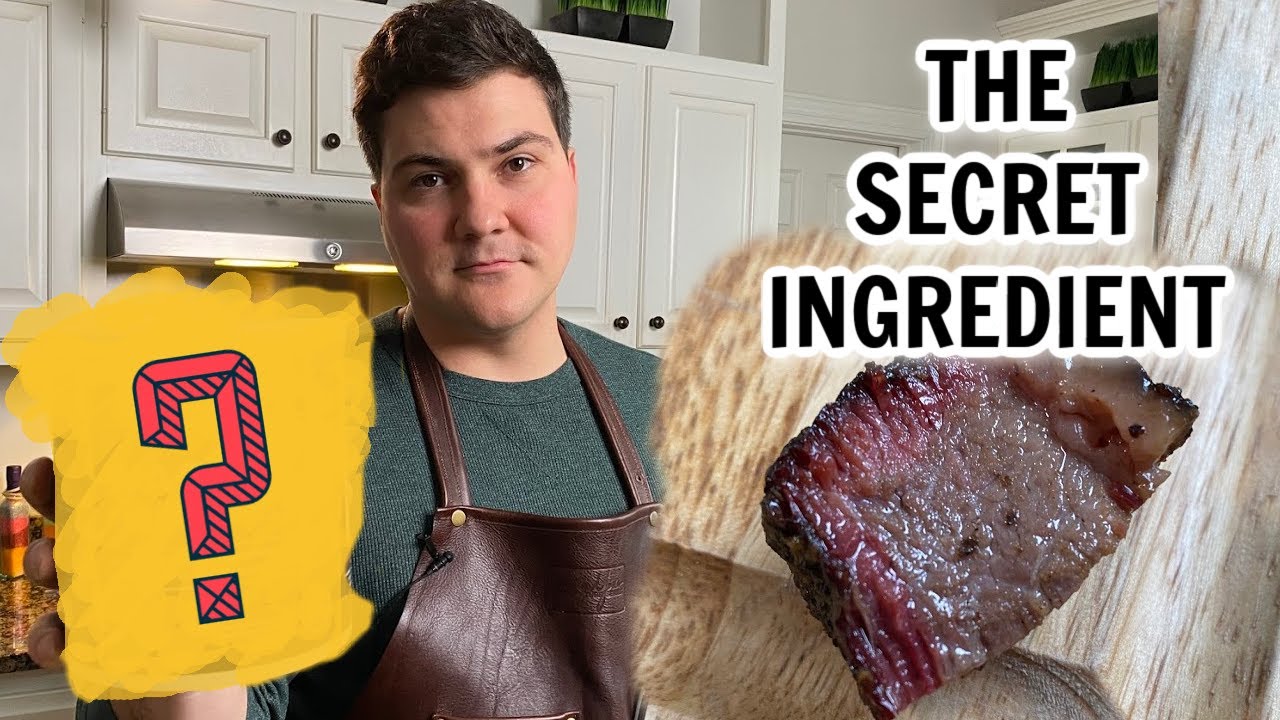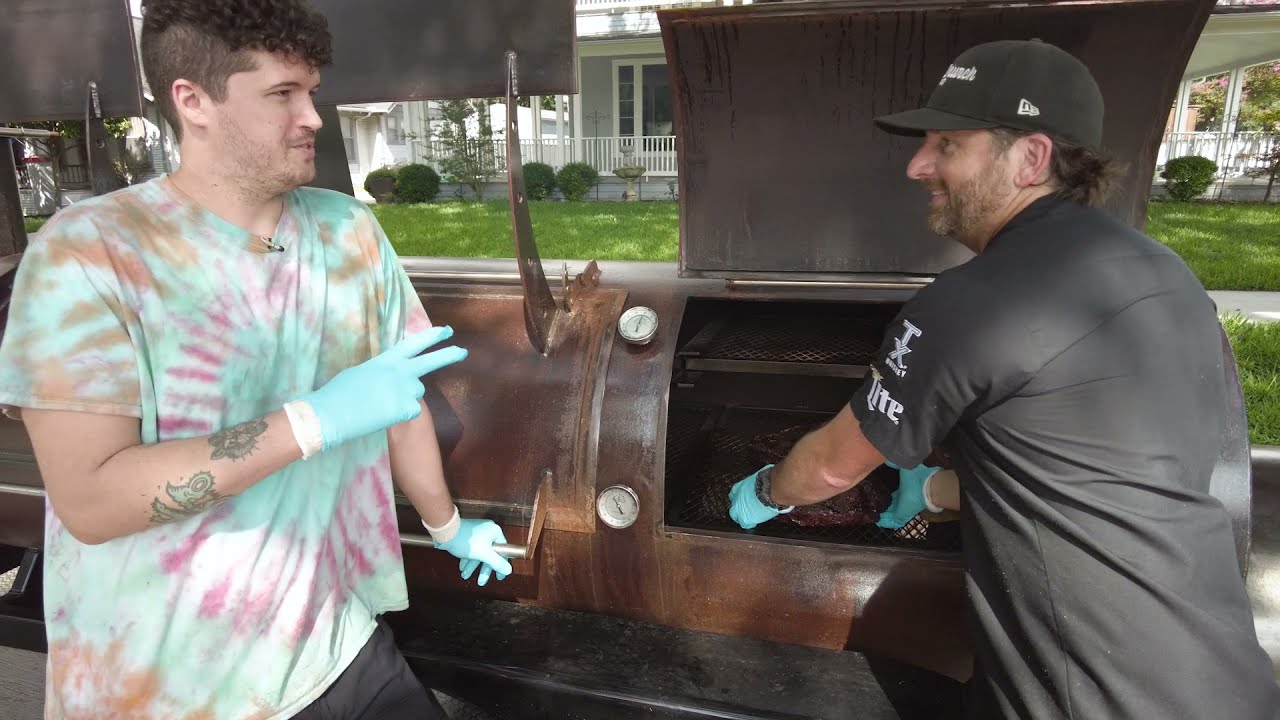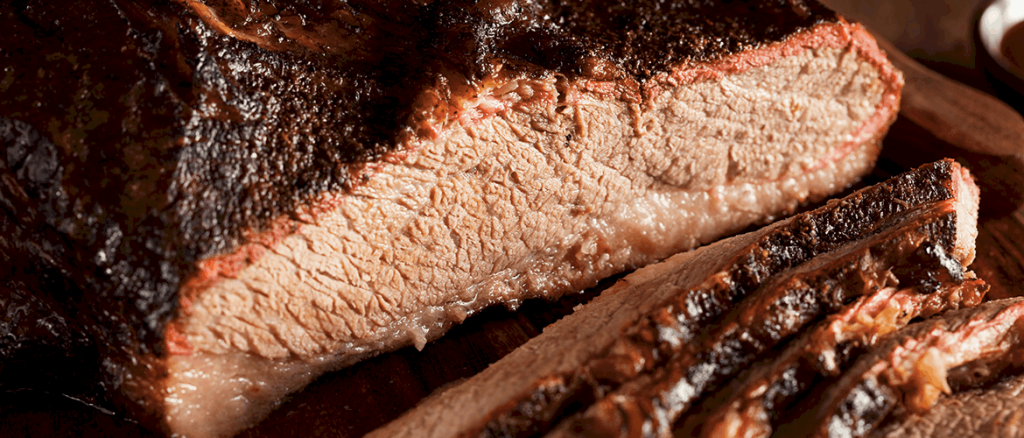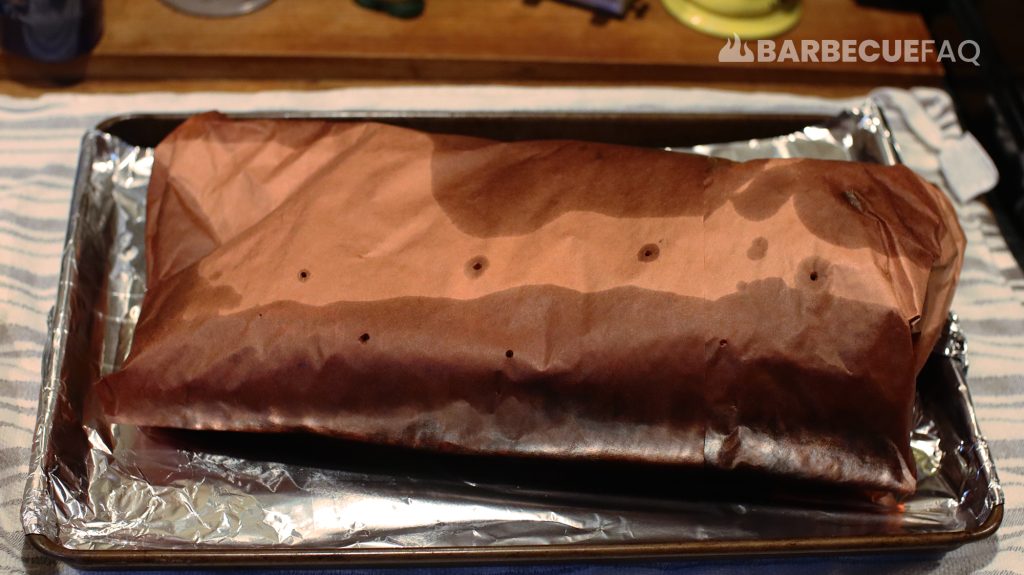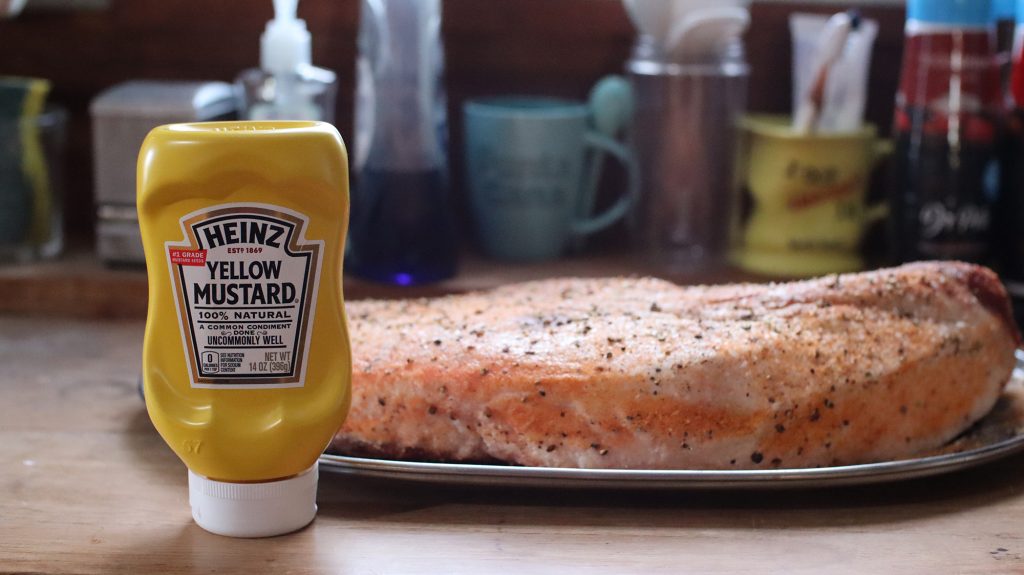I’ve tested this concept a lot with my Friends and Family and what I can tell you is that my family prefers smoked meat without added tallow in the wrap.
I find the tallow to be far too rich and it softens bark.
To quote my Mother: “It’s like there’s an oil slick in your mouth.”
Truly, It’s Just for Pictures and People Eat With their Eyes First
Beef tallow is rendered beef fat.
When cold it’s solid – when warm it’s liquid.
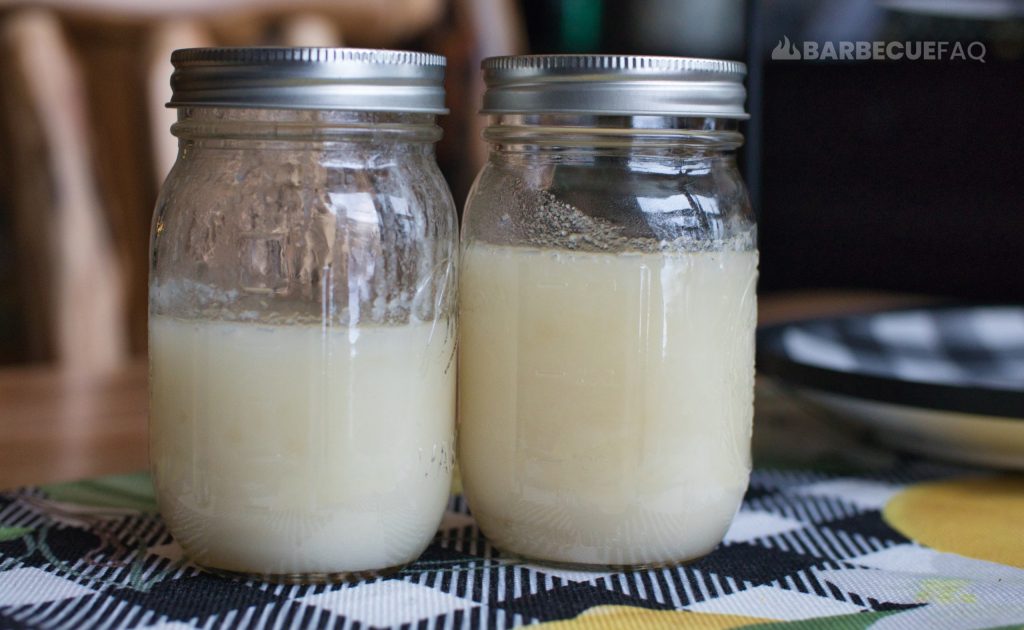
Wrapping with tallow does a few things:
- It softens the bark.
- It adds the perception of richness to the exterior of the meat.
- It can overshadow rub ingredients.
- It makes the bark shinier.
I personally don’t like it and it’s not needed.
Why Wrapping Brisket with Tallow has Become “Fashionable”
This is mainly because of Aaron Franklin (and Youtube).
Most people in the barbecue world have heard of Aaron Franklin – the Owner of Franklin Barbecue – He’s best known for his Brisket and a number of people have tried to figure out his secret(s).
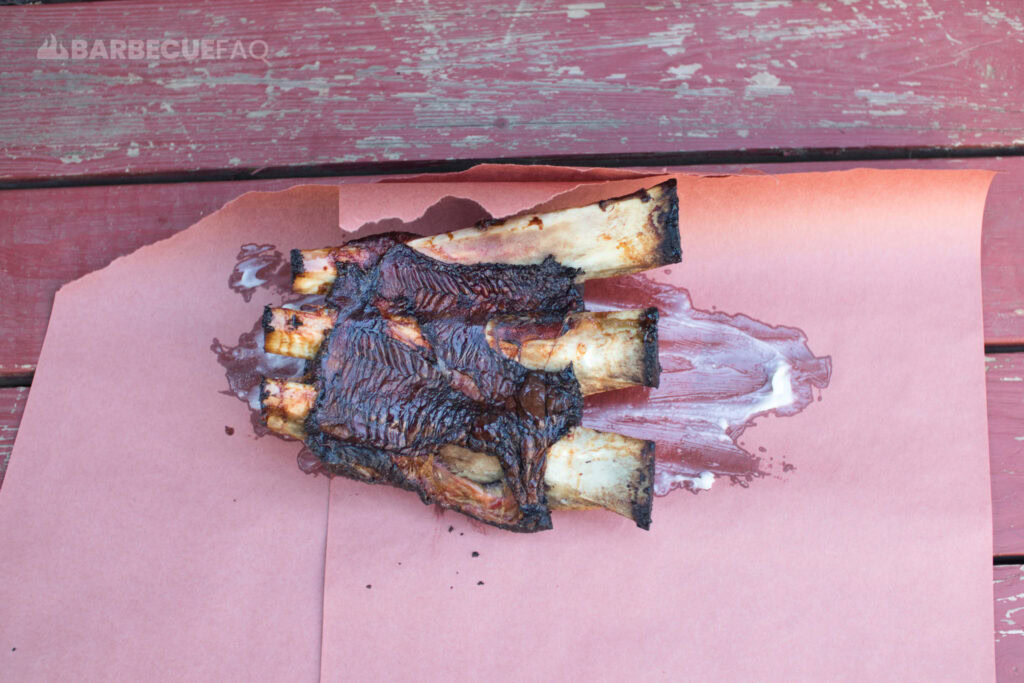
In early 2021, 2 people attempted to decipher what the primary differences might be between his Brisket and theirs.
- Harry Soo of Slap Yo Daddy BBQ and
- Jeremy Yoder of Mad Scientist Barbecue.
Essentially Jeremy surmised that Aaron Franklin must be wrapping the brisket with Beef Tallow as the butcher paper was entirely too wet when pulled for slicing (I agree).
Harry’s video came out roughly a month after Jeremy’s.
Harry created an 11-part series using the scientific method where he would change certain control variables.
Unfortunately, Harry didn’t create a playlist on YouTube for this but you can watch Part 1 here and then find the others on his channel.
Then there’s Johnny White (Jirby BBQ on YouTube) who worked for Aaron Franklin.
While Johnny hasn’t made any definitive statements (likely non-disclosure agreements are involved), it’s not super hard to read between the lines:
- He’s shown the rub he uses – kosher salt, black pepper, and Lawry’s.
- He’s shown how he would wrap a brisket in tallow.
- He’s shown that some Texas Pitmasters do put tallow in the firebox – Jeremy Yoder also created a video where-in he put tallow in his firebox based on the word of another Texas Pitmaster.
- He’s shown how they slice brisket with tallow on the cutting board to prevent oxidation.
Jirby also did a video with Matt Pittman from Meat Church where they cooked 2 briskets – 1 using tallow and another without tallow.
The brisket that’s tallow wrapped is noticeably shinier and more visually appealing.
As Matt says “it’s for the Gram’ and the likes.”
All 3 people comment:
- How it’s “wet”
- it’s a “1 slicer”
- “rich”
- that the tallow can “mellow out the bark”
- there’s a “film of fat on the mouth”
I agree with every comment.
My Opinions on Using Beef Tallow When Wrapping Brisket (Meat in General)
Personally, I don’t wrap nor rest my briskets with beef tallow.
I’ve tested it dozens of times and my family does not like it. With that said, it does help with pictures.
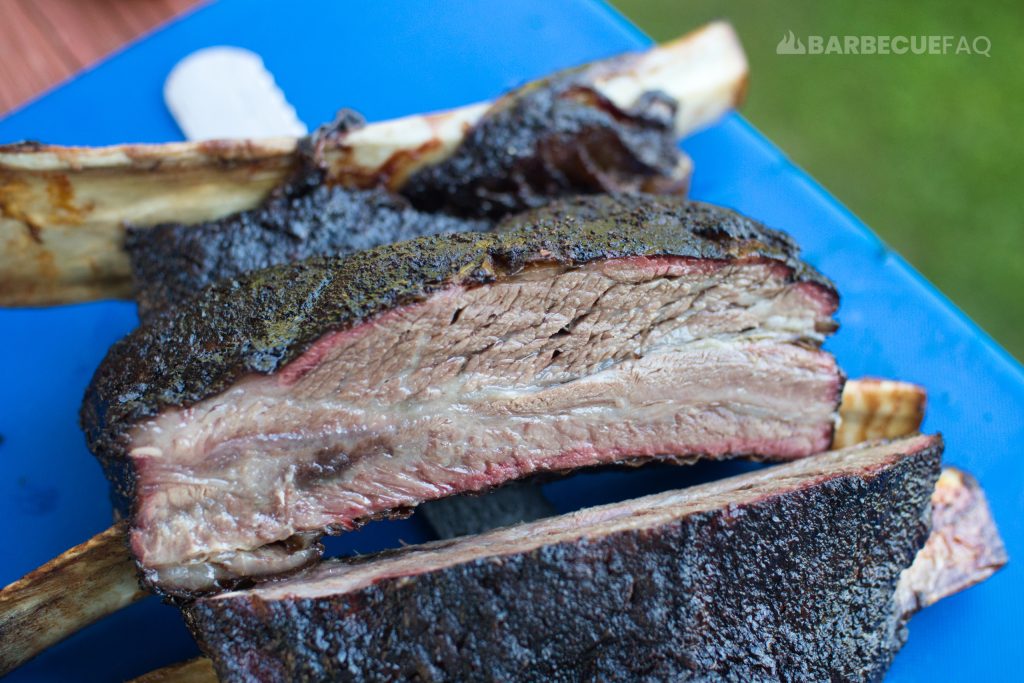
The shiny bark above is due to wrapping with tallow.
The brisket below I smoked whole and reheated with 3 pats of butter on top (which is also a fat).
The unsalted butter is FAR less overwhelming but still gives us that shiny appearance.
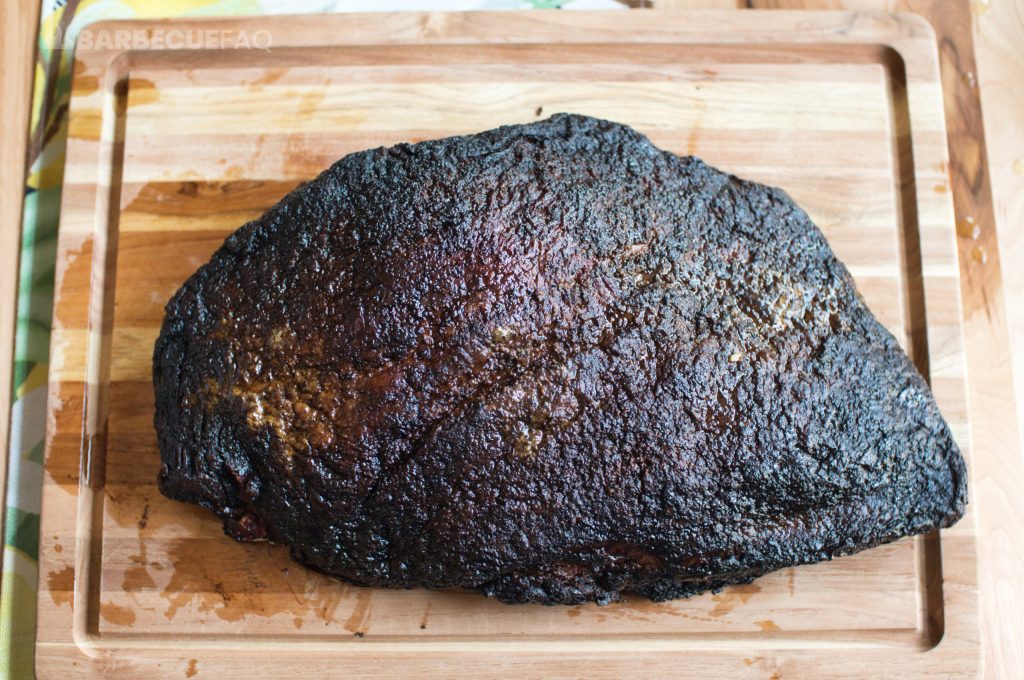
Here’s a brisket I smoked and used no tallow or fat on top:
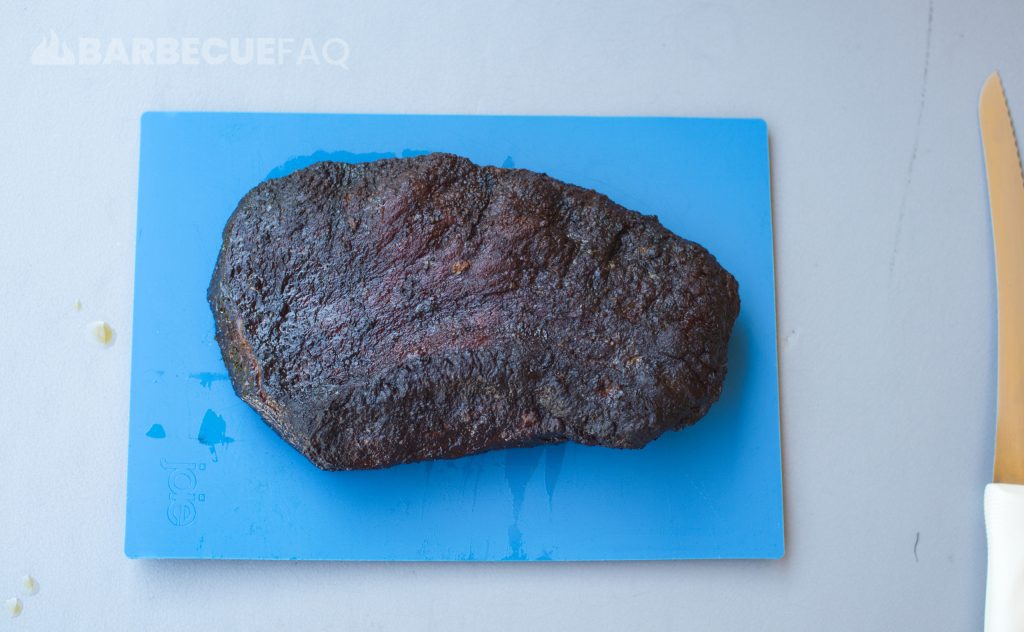
It’s less “matte” colored, less shiny but just as juicy and the bark is crunchier.
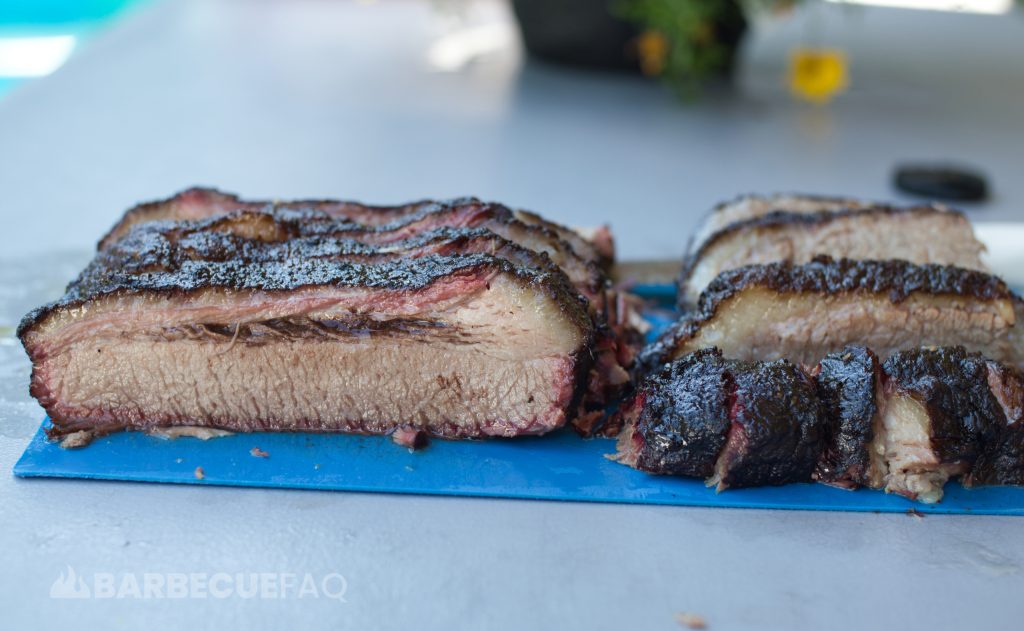
Personally, I like crunchy bark and actually being able to taste my rub ingredients.
If I want “richness” I’ll just eat the point meat instead of the flat meat.
I also think you can just wrap the brisket in foil, trap moisture, and it’ll soften the bark and condense on the surface of the meat regardless – no added fat needed.
I’d urge you to test for yourself.


